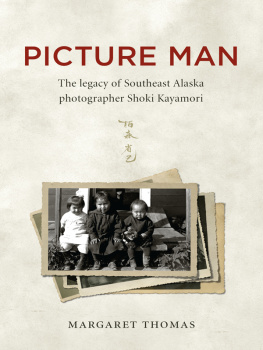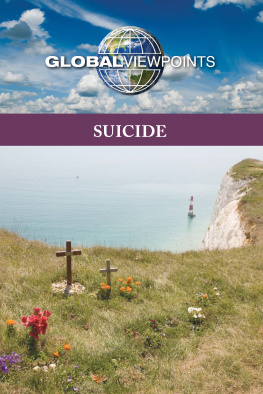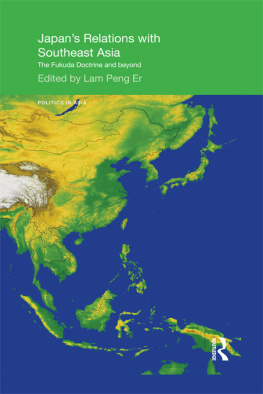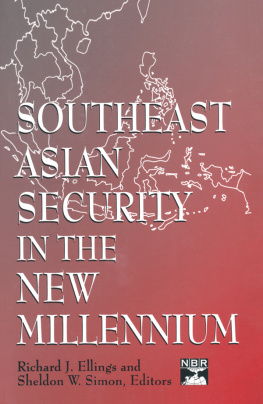Some of Kayamoris history was hidden behind a language barrier. As a high school exchange student, I spent a year with a wonderful Japanese family, but my grasp of the language remains rudimentary. It was my friend Mayumi Yamamoto who unlocked the story of the photographers early life in Japan. A talented researcher and translator, Mayumi quickly located the Kayamori family in central Japan. The next time she went home to visit her own family she interviewed the Kayamoris on my behalf. An elderly great-niece wept and thanked her for bringing them news of a long-lost family member.
The Kayamoris cleared up confusion about the photographers first name. The people in Yakutat knew him simply as Kayamori. His first name appeared in Frederica de Lagunas book Under Mount Saint Elias, probably based on interviews with Yakutat residents less than a decade after his death. She transcribed the name as Fhoki, a letter combination that does not exist in Japanese. The Kayamoris provided a family tree that showed his first name as Seiki. The same kanji can be read Shoki, a nickname he often used on official documents.
Mayumis success motivated me to return to Alaska for another look at the Kayamori collection, which was not yet entirely online. Serendipitously, I met the head of Alaska State Librarys Historical Collections, Jim Simard, who has from that day on unflinchingly supported this project. His positive comments about the manuscript and his offer to donate someseventy images from the collection were instrumental in the University of Alaska Presss decision to publish this book.
Though I have never met him, UA Press acquisitions editor James Engelhardt can expect a hug if I ever do. He took a chance on an unpublished writer with a half-finished manuscript and guided me through the two-year process from inception to publication. His instincts about how to improve the text always did.
Without the two Jamess backing, I could not have gotten generous grants from King County 4Culture and the Alaska Humanities Forum, or a dozen more Kayamori images from the Sealaska Heritage Institute. All of these built the momentum necessary to convince South Puget Sound Community College to give me a paid sabbatical to finish the book.
Support from strangers is always surprising and gratifying, but my mother Hilda Merricks interest in this project and the improvements she made to portions of the text will always matter most to me. Thanks, Mom.
Note: Only those photographs from the Alaska State Library Historical Collection and from the Sealaska Heritage Institute (tagged with a (K) throughout this book) were taken by Shoki Kayamori. The four images where he is pictured presumably were taken with a self-timer or by someone else using his camera.
BIBLIOGRAPHY
Alien Registration Lauded by Lehman. New York Times, August 26, 1940.
Aoki and Wife Buy Bungalow. Oregonian, April 12, 1909.
Aoki Denies Matrimonial Difficulties. Seattle Daily Times, December 26, 1910.
Aokis Find Home in Seattle Suburb. Seattle Daily Times, April 10, 1909.
Asian Labor Contractors in the Alaska Canned Salmon Industry: 18801937. Labor History 22 (Summer 1981): 377397.
Children of American Mother and Japanese Father are Geniuses. Bellingham Herald, December 5, 1922.
Chinaman Being Displaced. Seattle Daily Times, June 11, 1904, p. 5.
Doors Closed to Aokis: Jap and White Wife Thought Undesirable Tenants. Oregonian, July 12, 1910.
Elaine Abraham and MaryAnn Paquette. Host Bill Schneider. Project Jukebox. Digital Branch of the University of Alaska. July 1995. Web.
Exclusion of Japanese Discussed. Seattle Daily Times, June 26, 1903, p. 13.
Girls Love for Oriental Wrecks Home of Her Father. Seattle Daily Times, March 28, 1909.
Gladys Aoki Sues for Divorce. Morning Olympian, June 8, 1910.
Hiss Girl Who Would Marry Japanese Aoki. Nevada State Journal, March 26, 1909.
Japs Send Wages Home. Seattle Daily Times, October 22, 1904, p. 9.
Rev. H. H. Gowen, Who Explains His Religious Duties. Seattle Daily Times, March 29, 1909, p. 1.
Throw Bricks at Japanese Suitor: Corte Madera Residents May Treat Miss Emerys Fiance to Tar and Feathers. San Francisco Call, March 20, 1909, p. 20.
War on Lodging Houses. Seattle Daily Times, February 22, 1903, p. 7.
Alaska State Library Historical Collections. Guide to Collections: Kayamori, Seiki (Shoki, Fhoki).
Allerfeldt, Kristofer. Race, Radicalism, Religion, and Restriction: Immigration in the Pacific Northwest, 18901924. Westport, CT: Praeger, 2003.
Alley, William. Steel Rails & Fish Scales. Columbia 9, no. 3 (Fall 1995).
Arnold, David F. The Fishermens Frontier: People and Salmon in Southeast Alaska. Seattle: University of Washington Press, 2008.
Ballet.co. Uncle Gunjiros Girlfriend, March 23, Kanber Hall, JCCSF, 2007. Web.
Barone, Michael. A Nation Built for Immigrants. Wall Street Journal, September 20, 2013.
Beasley, W. G. Japan Encounters the Barbarian. New Haven, CT: Yale University Press, 1995.
Becker, Jules. The Course of Exclusion:18821924. San Francisco: Mellen Research University Press, 1991.
Blecha, Peter. UW Hosts Lecture by Rev. Herbert H. Gowen on May 11, 1909, to Inaugurate New Department of Oriental Subjects. HistoryLink. Web.
Budge, Kent. Tojo Hideki (18841948). Pacific War Online Encyclopedia. Web.
Carter, John F. Memorandum on C. B. Munsons Report Japanese on the West Coast. Web.
CensusViewer. Yakutat, AK Population. Web.
Chamberlain, Basil H. Things Japanese. 5th ed. London: Kelly & Walsh Limited, 1905.
Chandonnet, Fern, ed. Alaska at War, 19411945: The Forgotten War Remembered. Fairbanks: University of Alaska Press, 2008.
Chesley, Frank. Goon Dip (ca. 18621933). HistoryLink. Web.
Chin, Doug. Seattles International District: The Making of a Pan-Asian American Community. Seattle: International Examiner Press, 2001.
Clark, Delbert. Aliens to Begin Registering. New York Times, August 25, 1940.
Cornell University Law School Legal Information Institute. Takao Ozawa v. United States. Web.
Crowley, Walt, and Heather Macintosh. The Story of Union Station in Seattle







